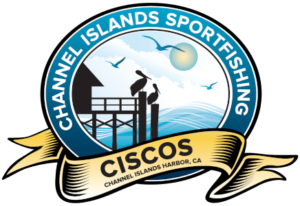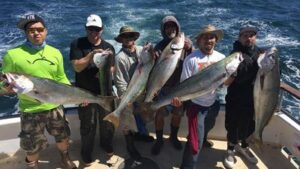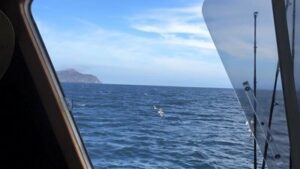Remembering How To Rockfish
I’ve talked a lot here and in my writing elsewhere about the El Nino season that has been 2014. It’s still going. One of our boats here at CISCOS, the Ranger 85, just had a trip Thanksgiving weekend where they caught over 100 yellowfin tuna, 8 yellowtail, and 1 bluefin tuna! In November, several of our boats caught local yellowtail. It definitely has been an amazing year up here in the beautiful Channel Islands.
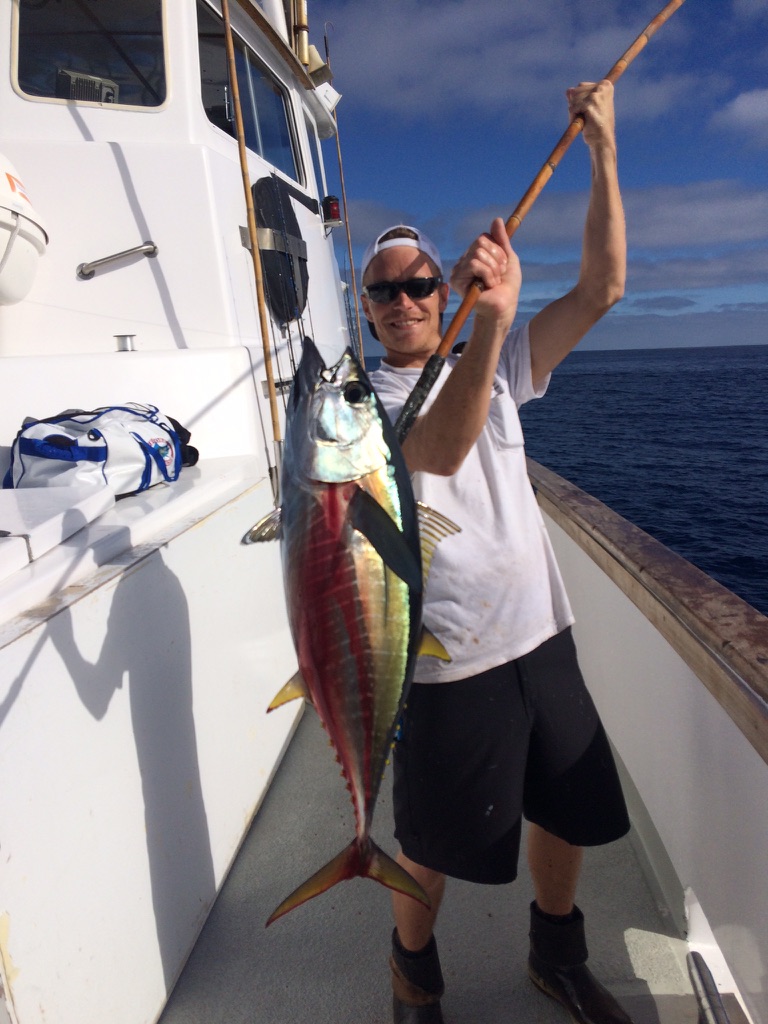
Personally, I went on my first offshore trip in June. Since then, it’s been a steady diet of offshore tuna/yellowtail/ dorado fishing, local/islands yellowtail, inshore calico bass fishing, and a late season white seabass outing.
That’s why when I had the opportunity to ride the Pacific Islander mid-November, I was very excited to go on a straight rockfishing trip. I didn’t think much of it in terms of preparation. After all, rockfishing was the first kind of fishing here in Southern California I had become proficient doing. I took two 40 lb. rigs that the previous week I had used to catch yellowtail (one for flylining a bait and the other for yo-yo iron fishing). I didn’t bother to strip off the topshot. I figured I’d just tie some dropper loops, hang a torpedo sinker and call it a day.
Long story short, I ended up coming home with a limit of rockfish and lingcod, but it took me awhile to get into the groove. In the process, I lost a lot of some of my favorite heavy jigs and a bunch of lead, and took a heavy dose of ribbing from the crew. Ouch!
It’s a good thing I had that opportunity to bungle my way through my first “return” rockfishing trip. Two weeks later, I hosted my 2nd Annual SoCal Salty trip aboard the Pacific Islander. Not wanting a repeat folly in front of bunch of my fishing buddies and blog readers, I took time to prepare my gear properly.
When I got onboard, I was happy to see my friend Lucas. Similar to me, Lucas had spent all his summer fishing time chasing tuna and yellowtail. In fact, the last time we fished together, it was in September on the Pacific Islander and we caught yellowfin tuna.
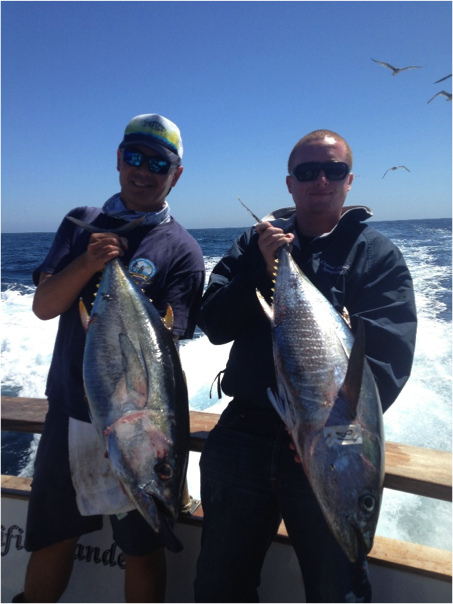
Now Lucas is a very good angler, but you know what? He went through the same painful adjustment process getting reacquainted with rockfishing too!
I had a much better trip the second time around and I attribute it to my gear prep and having some of the nuances of rockfishing fresh in my mind.
As we enter the last month of the year before rockfishing closes, I thought I’d share a few tips to help you maximize your year-end trips to fill up your freezer and tide you over until the 2015 opener.
Reverse Your Line
Most of my reels are filled about 2/3 to ¾ full of spectra. One of the things I like to do when fishing for tuna or yellowtail is fill up the rest of the spool with monofilament line. The mono helps absorb some of the violent shock when battling these hard fighting species. Having a longer topshot also means that the splicing knot doesn’t come into play to get hung up in the guides when casting.
For rockfishing though, you don’t want that stretch that the mono topshot gives you. I really like the sensitivity that spectra gives you. It allows you to feel the slightest nibble even at depths over 200 feet where the big rockfish and lingcod dwell. It also means that when you reel or lift your pole, something immediately happens at the business end of the line, instead of just the line stretching out.
Most people can’t afford to just strip off all their line and refill their spool with new spectra. To avoid doing that, a trick I like to do is reverse the line. Start by winding off all the line on your spool. Put the mono on one empty spool and the spectra on a separate empty spool. Then first re-tie the mono back to your spool. Wind it all back on, splice on the spectra and wind the spectra to the top of the spool. Now you get all the benefit of rockfishing with straight spectra without buying any new line.
Circle Hooks Are Your Friend
I prefer to use a light gauge circle hook for rockfishing. When using J-style hooks you have to set the hook when you get bit. Even if you are fishing straight spectra to a short mono topshot, the effect is diminished due to the greater depth. Also, has this ever happened to you? You get bit and immediately you can tell it’s not a bigger fish. You could reel it all the way back in, take off that dink, and drop again, or you could leave it down and wait for a bigger fish to bite your other hook. Often, that fish thrashing around down there will attract a bigger fish…maybe even a ling. Circle hooks keep them on the line.
If you aren’t sure how to pick out the right hooks, the helpful folks at the CISCO’s landing tackle store can help you out. They also sell premade rockfishing rigs that are excellent.
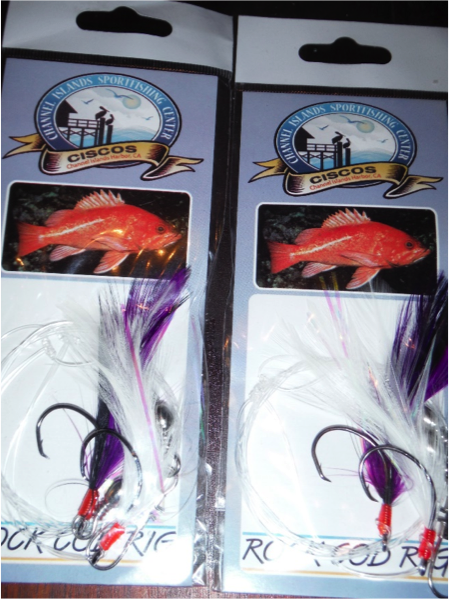
What Is The Right Amount Of Weight?
One of the things I see people do wrong when rockfishing is use either too much or too little weight. Use too much, and it’s easy for the weight to get lodged into a rock and lose it. Use too little and you can’t get down to where the big rockfish live. Worse, you end up tangled up with others around you. How much you use is dependent on factors like the depth, speed of the drift and current. If you are unsure, ask your deckhand. What you are looking for though is being able to get down to the bottom and hold your position without getting stuck in the rocks. Think of it as maintaining contact, but not dragging it along the bottom. Like any other fishing, the more time you spend in the productive area where the fish are, the better your chances of catching the big one.
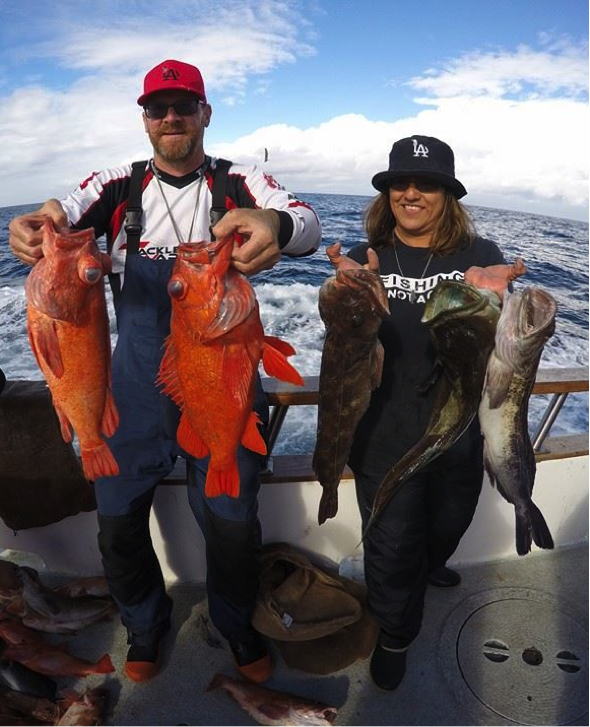
I hope you found these tips helpful. We hope to see you out soon before the closure. As always, you can see our schedule and book your trip online HERE or just call the landing at 805-382-1612.



